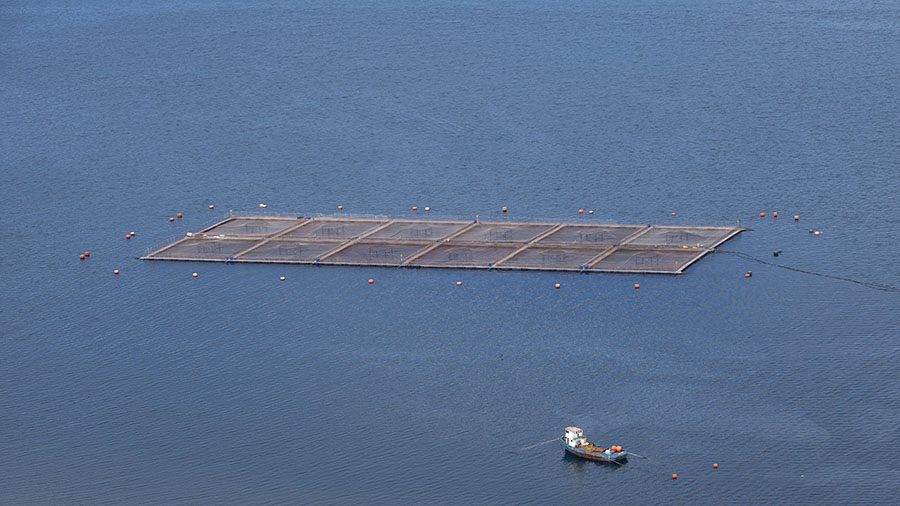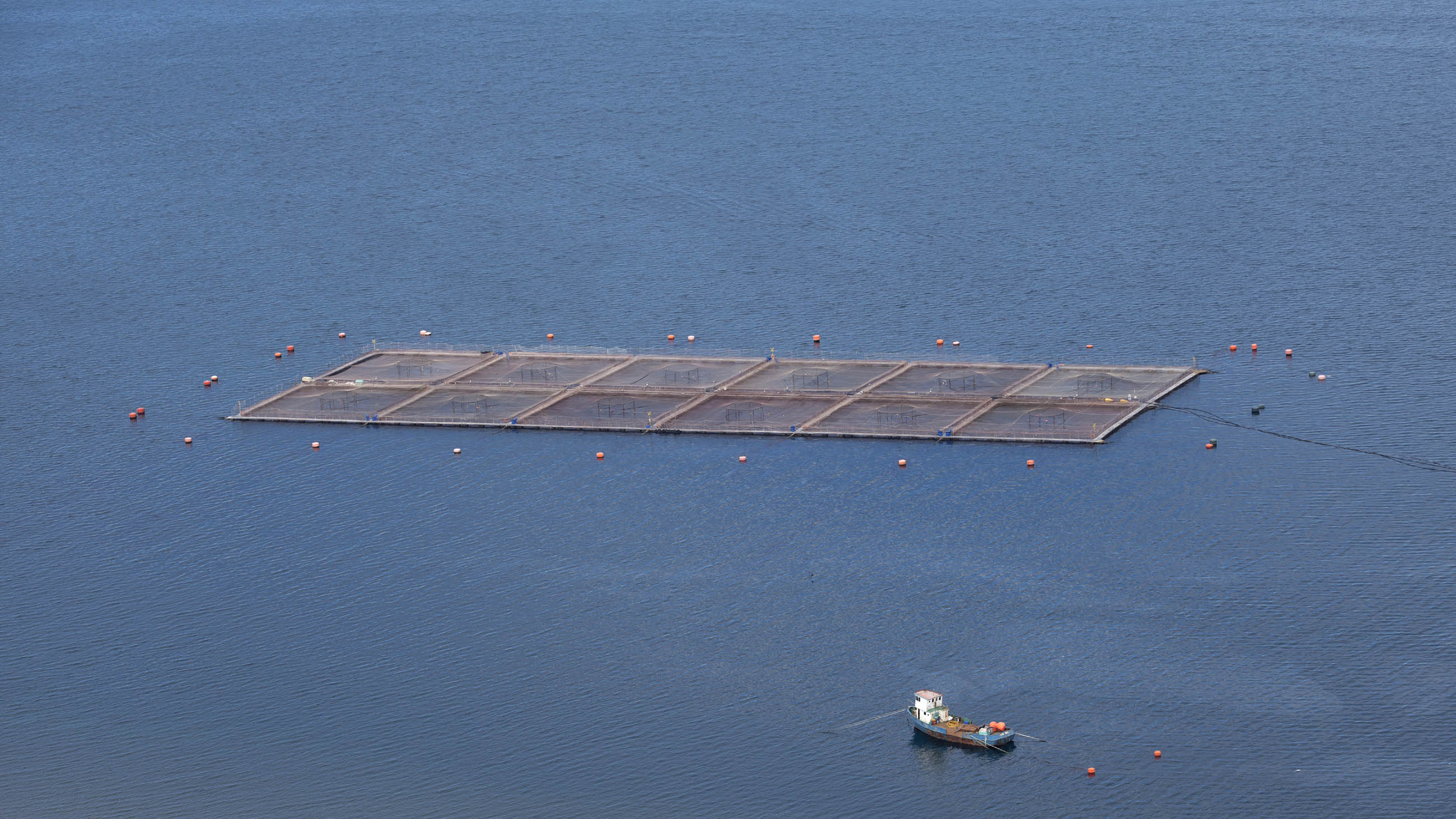Chile’s Red Tide: Self-Inflicted?
Over the last three weeks, waves of dead mollusks have washed up on the shores of southern Chile — the latest fallout in what is being called one of the country’s largest and most damaging algal blooms — periodic and rapid explosions in ocean phytoplankton populations that in some cases can produce toxins, deplete oxygen in the water, or otherwise doom a variety of local sea life.
In response to this most recent bloom, often called a red tide because of the associated discoloration of the water, the Chilean government has imposed a moratorium on fishing — a tack that has been met with pitched protests from thousands of fisherman on the southern island of Chiloé.

Salmon farms like this one near Chiloé, Chile, suffered die-offs in the last big algal bloom. But did they contribute to the current one? (Visual by roccomontoya/iStock.com)
While some red tides are naturally occurring, human activity is often a culprit, and speculations abound as to what has caused the latest Chilean bloom. Though the region has historically been plagued by periodic red tides, Chile’s fisheries service, Sernapesca, has blamed the bloom on warming waters brought on by El Niño. But some scientists are skeptical of the government’s simplistic explanation.
“I’m not sure if we can attribute this to El Niño,” said Aldo Pacheco, a professor at Chile’s University of Antofagasta who has studied El Niño from Chile and Peru. “We don’t have an exact explanation.” Though it’s true that 2016 has seen an especially strong El Niño phenomenon, Pacheco hasn’t heard of much evidence that its effects have reached as far south as Chiloé.
Instead, Pacheco thinks salmon farming activities, which are widespread in Chiloé and along the coast of southern Chile, might have something to do with it. After a punishing few months with catastrophic losses of tens of thousands of tons of salmon due to an algal bloom earlier this year, a consortium of salmon farmers was granted permission from Sernapesca to dump 9,000 tons of dead salmon into ocean waters 80 nautical miles off the coast of Chile. This dumping of dead salmon could have delivered just the right pulse of nutrients to stimulate the growth of phytoplankton, Pacheco suggested, pointing to a similar scenario in 2000 when fishmeal manufacturers dumped waste into Peru’s Paracas Bay, causing a red tide that killed 15 million scallops.
Camila Fernández, a biogeochemist at Chile’s University of Concepción, finds the Peruvian scenario provocative but notes that the situation is different. “That case in Peru is interesting but we’re talking about a closed system,” she said. Whether a similar chain of events could be triggered in the open ocean, Fernández suggested, is entirely unknown. “The red tide that’s affecting Chiloé at the moment does not necessarily have to do with the dumping of dead salmon. But no one at the moment is in any condition to confirm or refute that.”
The problem in Chile, explained Fernández, is that this speculation will only be compounded by the lack of research into phenomena like harmful algal blooms. Strandings happen almost every day in Chile, she said, but “today there aren’t enough data to model what is happening with precision.”
“To fix that would require systems of coastal observation as well as the development of toxin detection kits and other biotechnological tools,” said Fernández. That’s unlikely to happen anytime soon, she said, pointing to a funding problem that is systemic in Chile. “There is not sufficient investment in basic science to support applied [science].”











Comments are automatically closed one year after article publication. Archived comments are below.
I don’t understand a few things : someones speak of red blooms and the french TV show us red macro algae but I read that the problems are due tu Pseudochattonella verruculosa which is a micro-algae !
Is there simulateously red macro-algae and blooms of Pseudochattonella ?